Browning Citori Hunter Grade II Walnut 26" Over Under .410 Shotgun, Blued – 018259914 For Sale
$2,149.99
The Browning Citori Hunter Grade II Walnut 26″ Over Under .410 Shotgun is a sophisticated blend of elegance and utility, expertly crafted for those who appreciate luxury but aren’t afraid to use it in the field. This shotgun boasts a beautiful Grade II/III walnut stock with a satin finish for enhanced natural beauty and durability. Comfort is ensured with an Inflex recoil pad, minimizing recoil for a more enjoyable shooting experience. The receiver, with its elegant silver nitride finish, and the blued barrels offer aesthetic appeal and long-lasting performance, while the gold enhancements subtly highlight Browning’s heritage and quality. Ideal for both display and active use, the Citori Hunter Grade II embodies a perfect fusion of refined craftsmanship and practical functionality, catering to discerning hunters and shooting enthusiasts seeking top-tier performance and aesthetics.
What is the difference between Browning Citori grade 1 and grade 2?
The difference between the Browning Citori Grade 1 and Grade 2 shotguns primarily lies in the aesthetics and level of finish. Here are the key distinctions:
1. **Wood Quality**: Grade 2 models typically feature higher-grade wood, often with more attractive grain patterns and finishes compared to Grade 1.
2. **Finish and Engraving**: Grade 2 versions often have more intricate and detailed engravings on the receiver and other metal components, while Grade 1 has simpler, more basic engraving.
3. **Checkering and Styling**: The checkering on the stock and fore-end may be more finely executed on a Grade 2, providing both aesthetic appeal and improved grip.
These differences reflect different levels of craftsmanship and visual appeal, with the functionality of both grades generally being quite similar.
What are the grade levels of Browning Citori?
The Browning Citori is a popular line of over-under shotguns that comes in several grade levels, primarily differentiated by their finish and features. The main grade levels are:
1. **Citori 725**: Known for its sleek design and modern technology.
2. **Citori Lightning**: Offers a classic style with traditional features.
3. **Citori White Lightning**: Features a silver receiver with intricate engravings.
4. **Citori Grade I, II, III, & IV**: These grades have increasing levels of engraving and quality of wood.
5. **Citori Grade VI & VII**: High-end models with elaborate engravings and superior wood quality.
6. **Citori 525 & 625 Field/Sporting**: Variations designed specifically for hunting (Field) or clay shooting (Sporting).
Different models may have specific features tailored for certain shooting sports, such as hunting or trap shooting, and can have varying customizations based on the model and grade.
Is the Browning Citori Hunter a good gun?
The Browning Citori Hunter is generally considered a good shotgun. It is known for its reliability, quality craftsmanship, and classic over-under design. Many users appreciate its balance, durability, and versatility for hunting and sporting purposes. However, as with any firearm, the suitability of the Browning Citori Hunter depends on individual preferences and needs, so it’s advisable to handle and test the gun personally to see if it fits your requirements.
Is the Browning Citori worth the money?
The Browning Citori is generally considered worth the money for many shooters, especially those who value quality craftsmanship, durability, and performance. It is praised for its reliable action, excellent balance, and aesthetic appeal. However, whether it’s worth the money can depend on individual preferences, budget, and the specific use you have in mind, such as sporting, hunting, or clay shooting. It’s important to handle and, if possible, test the shotgun to see if it suits your needs before making a purchase.
What is the difference between Citori and Citori 725?
The Browning Citori and Citori 725 are both over-and-under shotguns known for their quality and reliability, but they have some differences:
1. **Trigger System**:
– The Citori features a traditional mechanical trigger.
– The Citori 725 is equipped with the Fire Lite mechanical trigger, which provides a lighter and more responsive trigger pull.
2. **Recoil Pad**:
– The Citori generally uses a standard recoil pad.
– The Citori 725 often includes an Inflex II recoil pad that is designed to reduce felt recoil more effectively.
3. **Weight and Profile**:
– The Citori 725 typically has a slimmer receiver and is slightly lighter in weight, which can enhance handling and reduce fatigue during extended use.
4. **Barrel Design**:
– The Citori 725 includes the Vector Pro lengthened forcing cones, which are intended to improve shot patterns and reduce recoil.
5. **Barrel Porting**:
– Some models of the Citori 725 come with ported barrels to further reduce muzzle rise and recoil.
6. **Chokes**:
– Both models allow for interchangeable chokes, but the Citori 725 often comes with Browning’s Invector-DS choke system, which offers a longer choke taper and brass seal for better pattern performance and ease of use.
Overall, the Citori 725 is designed with advanced features that enhance its performance, making it more suitable for competitive shooting and users looking for a premium experience.
How much does a browning citori cost?
The price of a Browning Citori can vary widely based on factors such as the specific model, condition (new or used), and any additional features or customization. Generally, new Browning Citori shotguns can range from around $1,800 to over $5,000. For an accurate price, it’s best to check with authorized dealers or online firearm retailers, as prices can fluctuate and vary based on location.
How long will a Browning Citori last?
The lifespan of a Browning Citori shotgun can vary based on factors like usage, maintenance, and environmental conditions. With proper care and regular maintenance, a Browning Citori can last for several decades and even be passed down through generations. Many owners report using their Citori for tens of thousands of rounds without significant issues. Regular cleaning, lubrication, and proper storage are key to ensuring its longevity.
Are all Browning Citori made in Japan?
Yes, all Browning Citori shotguns are manufactured in Japan by Miroku Corporation.
What are the different grades of Browning shotguns?
Browning shotguns are available in several grades, each offering different features, aesthetics, and craftsmanship. While the specific grades may vary slightly across different models and lines, some common grades include:
1. **Field Grade**: These are generally the standard models designed for functionality and reliability, often used for hunting and casual shooting.
2. **Hunter Grade**: Similar to Field Grade but might include enhancements for hunting purposes, such as improved ergonomics or finishes that withstand harsh outdoor conditions.
3. **Grade I**: This typically represents the entry-level or standard model with basic features and minimal engraving or embellishment.
4. **Grade II, III, IV, V**: These grades feature progressively increasing amounts of engraving, higher-quality wood for the stock, and other aesthetic enhancements. As you move up from Grade I to V, the shotguns generally become more ornate and potentially more valuable.
5. **Gold Classic/Gold Hunter**: Models within the Gold series often include additional features like gold inlays or embellishments, alongside higher grades of materials.
6. **Citori Series**: Within the Citori series, various grades and special editions may be available, often denoting differences in engraving detail, wood selection, and other specifications.
7. **Bespoke or Custom Grades**: Browning may offer bespoke or custom shop options where shotguns are tailored to an individual’s specifications, often including unique engravings or special materials.
The availability and specific characteristics of each grade might vary with time and across different Browning shotgun models. Always refer to the latest catalogs or Browning’s official website for the most current information.
Where is the Browning Citori Hunter made?
The Browning Citori Hunter is made in Japan, specifically by the Miroku Corporation.
Who makes the best shotgun for hunting?
The “best” shotgun for hunting can depend on various factors such as the type of game being hunted, personal preference, budget, and intended use. However, some well-regarded shotgun manufacturers known for producing high-quality hunting shotguns include:
1. **Browning**: Known for its reliable and versatile shotguns like the Browning Citori Over/Under and the Browning A5 semi-automatic.
2. **Beretta**: Offers a range of shotguns known for their quality and performance, such as the Beretta 686 Series and the Beretta A400 series.
3. **Benelli**: Renowned for its innovative designs and reliability, Benelli shotguns like the Benelli Super Black Eagle series are popular among hunters.
4. **Remington**: Offers iconic models like the Remington 870 pump-action, known for its durability and versatility.
5. **Mossberg**: Provides affordable and reliable options like the Mossberg 500/590 series, popular for their ruggedness.
The choice of the best shotgun also depends on factors such as the gauge, barrel length, and action type that best fit your hunting needs. It’s advised to try out different models to see what feels best for your style and requirements.
Does Browning Citori have ejectors?
Yes, the Browning Citori shotgun is equipped with ejectors. These ejectors automatically remove spent shells from the chambers when the action is opened.
What are the different levels of shotguns?
Shotguns are typically categorized based on their intended use, action type, and design features. Here are the common levels or types of shotguns:
1. **Action Type:**
– *Pump-Action:* Requires manual cycling of a sliding forearm to eject the spent shell and chamber a new one.
– *Semi-Automatic:* Uses the energy from firing a shell to automatically cycle the action, chambering the next round.
– *Break-Action:* Includes over-under and side-by-side shotguns; manually loaded by breaking open the barrel.
– *Bolt-Action:* Features a manual bolt mechanism to chamber rounds and eject spent shells.
– *Lever-Action:* Operated by a lever, similar to traditional lever-action rifles.
2. **Gauge:**
– Common gauges include 12-gauge, 20-gauge, 28-gauge, and .410 bore. The gauge denotes the diameter of the barrel and size of the ammunition.
3. **Intended Use:**
– *Hunting Shotguns:* Designed for hunting different game, such as waterfowl, upland birds, or deer.
– *Home Defense Shotguns:* Typically shorter barrel lengths for maneuverability and ease of use in confined spaces.
– *Sporting Shotguns:* Used for activities like skeet, trap, and sporting clays; often finely crafted and balanced for accuracy.
4. **Design Features:**
– *Tactical Shotguns:* Equipped with features like adjustable stocks, pistol grips, and rail systems for accessories.
– *Classic/Traditional Shotguns:* Often feature wooden stocks and are prized for their craftsmanship.
Each of these levels or types of shotguns is designed to meet specific needs and preferences of the user.
What are shotgun grades?
Shotgun grades refer to the categorization of shotguns based on their quality, craftsmanship, materials, and often aesthetic features. These grades can influence the value and pricing of shotguns. Generally, shotguns may be categorized as follows:
1. **Field Grade:** This is the most basic grade, typically designed for durability and functionality. Field grade shotguns are usually intended for hunting and general use, without many decorative elements.
2. **Mid-grade:** These shotguns offer improved materials and construction over field-grade models. They may feature some embellishments such as minor engravings or better wood quality.
3. **High-Grade or Custom Grade:** These shotguns are made with top-quality materials, superior craftsmanship, and often include extensive engravings, fine wood, and other decorative features. They are usually custom-made or limited edition, catering to collectors or enthusiasts.
4. **Collector’s Grade:** These are rare, often historical shotguns that are valued for their craftsmanship, uniqueness, or provenance. They are highly sought after by collectors.
Different manufacturers may have their own specific grading systems, and additional factors such as brand reputation and historical significance can also affect the grading of a shotgun.
What are the different grades of Browning SA 22?
The Browning SA-22, also known as the Browning Semi-Auto .22, is a highly regarded .22 caliber rifle known for its design and craftsmanship. Over the years, several grades of the Browning SA-22 have been produced, each with different features and levels of finish. The primary grades include:
1. **Grade I**: This is the standard model with a plain walnut stock, blued metal finish, and basic sights. It features a simplistic design and is the most common and affordable option in the SA-22 lineup.
2. **Grade II**: This model features upgraded aesthetics, often including better-quality wood for the stock with some checkering, as well as more detailed engravings on the receiver. It combines functionality with enhanced visual appeal.
3. **Grade III**: This variant takes aesthetics further, featuring high-grade walnut wood with intricate checkering, along with more elaborate engraving on the receiver. These engravings often depict hunting scenes or wildlife motifs.
4. **Grade IV and V**: These rare and more luxurious models include premium wood and even more detailed engraving and inlays, often with gold inlay features. They are considered collector’s items and are usually produced in limited quantities.
5. **Custom or Limited Edition Grades**: Occasionally, Browning releases special editions or custom shop variants that might have unique features, finishes, or commemorative designs.
Each grade represents a step up in decorative features, craftsmanship, and often price, catering to different segments of the market, from functional use to collectors and enthusiasts.
| Product Line | Citori Hunter Grade II |
|---|---|
| Action | Over Under |
| Overall Length | 43" |
| Length of Pull | 14.25" |
Be the first to review “Browning Citori Hunter Grade II Walnut 26" Over Under .410 Shotgun, Blued – 018259914” Cancel reply
Related products
Browning Citori Hunter Grade II
Browning Citori Hunter GradeII 16 Gauge 26" Break Action Shotgun – 18259514
Browning Citori Hunter Grade II
Browning Citori Hunter GradeII 28 Gauge 28" Break Action Shotgun – 18259813
Browning Citori Hunter Grade II
Browning Citori Hunter Grade II
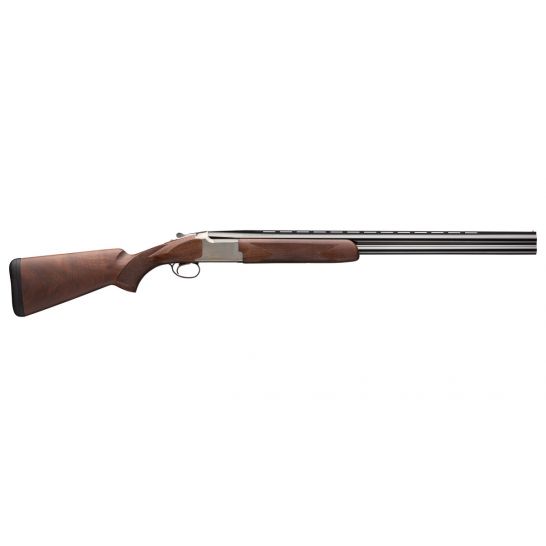
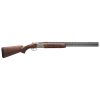
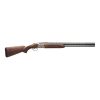
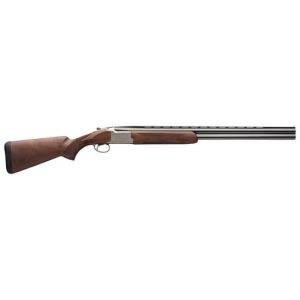
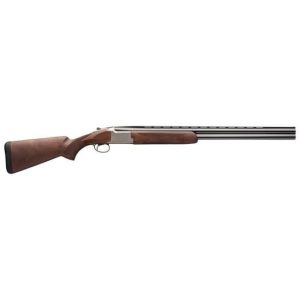
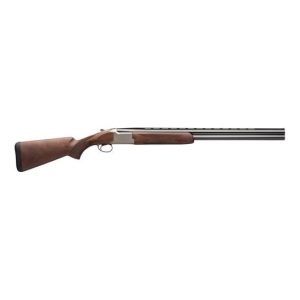
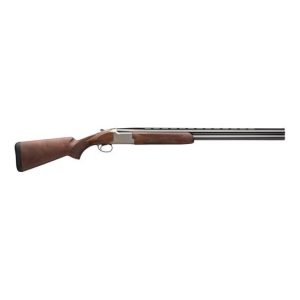
Reviews
There are no reviews yet.